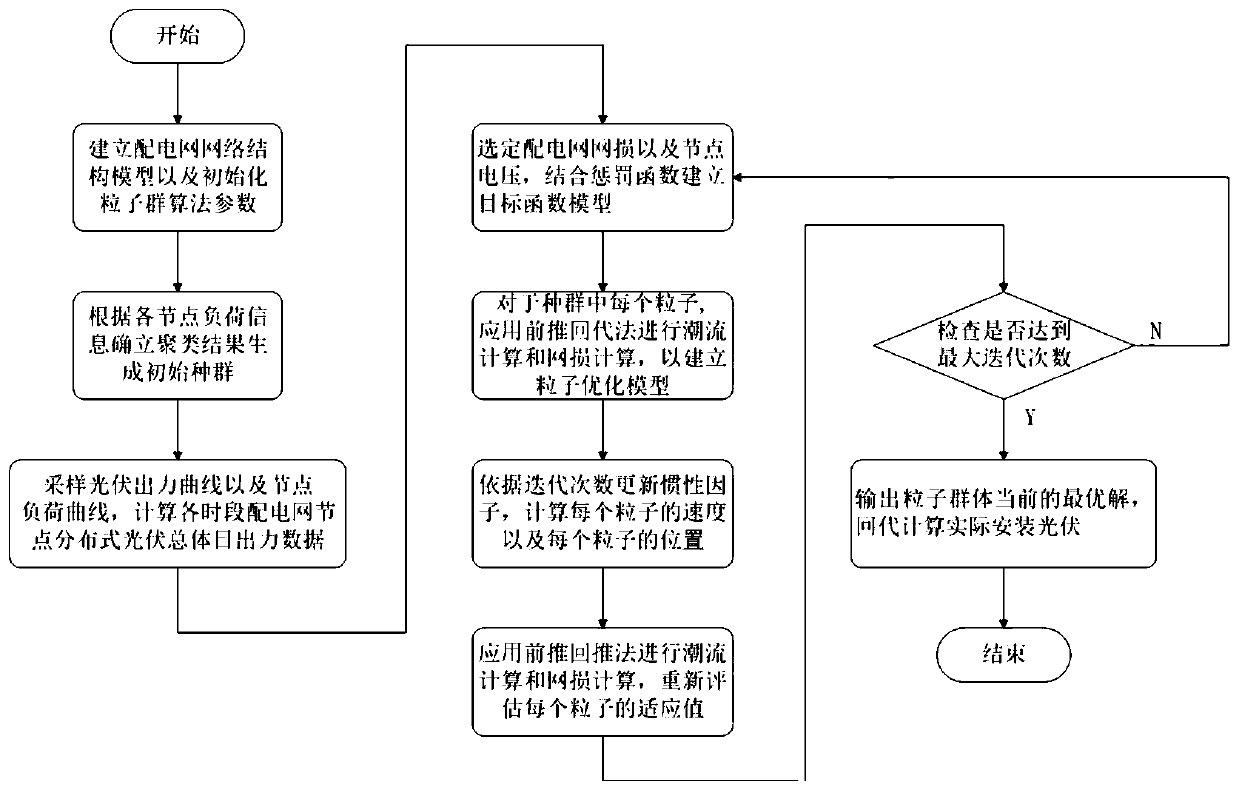Distributed photovoltaic power distribution network planning method based on improved particle swarm
A distributed photovoltaic and distribution network planning technology, applied in photovoltaic power generation, single-network parallel feeding arrangement, instruments, etc., can solve problems such as inability to meet the lean planning of photovoltaic power generation, inconsistent load random distribution characteristics, etc.
- Summary
- Abstract
- Description
- Claims
- Application Information
AI Technical Summary
Problems solved by technology
Method used
Image
Examples
Embodiment Construction
[0077] In order to facilitate those of ordinary skill in the art to understand and implement the present invention, the present invention will be described in further detail below in conjunction with the accompanying drawings and embodiments. It should be understood that the implementation examples described here are only used to illustrate and explain the present invention, and are not intended to limit this invention.
[0078] Combine below figure 1 , introduce the specific embodiment method of the present invention as:
[0079] Step 1: Establish the network structure model of the distribution network and initialize the parameters of the particle swarm optimization algorithm;
[0080] The network structure model of distribution network established in step 1 is:
[0081] Get the number of distribution network nodes as N, Z i is the branch impedance of node i, P i +jQ i is the load on node i, P i is the load active power of node i, Q i is the load reactive power of node...
PUM
 Login to View More
Login to View More Abstract
Description
Claims
Application Information
 Login to View More
Login to View More - R&D
- Intellectual Property
- Life Sciences
- Materials
- Tech Scout
- Unparalleled Data Quality
- Higher Quality Content
- 60% Fewer Hallucinations
Browse by: Latest US Patents, China's latest patents, Technical Efficacy Thesaurus, Application Domain, Technology Topic, Popular Technical Reports.
© 2025 PatSnap. All rights reserved.Legal|Privacy policy|Modern Slavery Act Transparency Statement|Sitemap|About US| Contact US: help@patsnap.com



